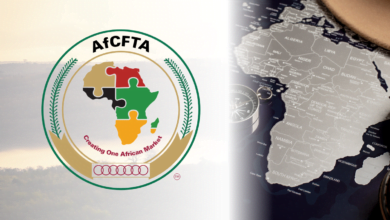According to the World Bank report, the global growth rate for 2016 would reach 2.4%, demonstrating that prospects are significantly different between exporters and importers of staple products, and there is a strengthening of risks contributing to an economic decline. This report suggests a real risk measurement tool , not forgetting to demonstrate a real decline in growth compared to last January.
Global growth forecasts for 2016 were revised downwards. They represent 2.4% compared to 2.9% announced in January. This decision is explained by the weak growth rates in the advanced economies, the continuing fall in prices of staple products, the sluggishness of the world trade and the decline in capital flows. Moreover, the latest report on the perspectives for global economy reports that emerging markets and developing countries exporting commodities are poorly adapted to the weakening of oil prices and other essential commodities. These factors explain half of this downward revision. The report also highlights the expected margin growth in these economies. A margin of just 0.4% this year, 1.2 percent lower than the figures announced in January. « This slowdown demonstrates the important need for countries to implement policies that promote economic growth and improve the living conditions of people living in extreme poverty » says the president of the World Bank Group, Jim Yong Kim, adding that « growth is the main marker of poverty reduction, and that’s why we are very concerned to see a sudden slowdown in developing country exporters of commodities due to low prices in this sector « .
Different perspectives for exporters and importers
The report predicts that sub-Saharan Africa will experience a continued slowdown in growth. It should reach 2.5% in 2016, against 3% estimated in 2015. It is estimated that the low cost price of commodities will persist, with a decline in global activity. Furthermore, the report states that oil-exporting countries should not see their consumption increase substantially, but among oil importers, the decline in inflation should stimulate household consumption. This advantage could nevertheless be mitigated by the increase in food prices due to drought, high unemployment and currency depreciation. The investment is expected to slowdown in many countries as governments and investors reduce or repel capital spending. According to the report of the World Bank, emerging markets and developing economies that import commodities are more resilient than the countries that export, although the positive effects of lower energy prices and other slow to materialize. These markets and economies are expected to grow by 5.8% in 2016, slightly less than the 5.9% estimated for 2015. The reasons? An improvement in economic activity favored by low energy prices and a modest recovery in advanced economies. Among the large emerging markets, China is expected to record a growth rate of 6.7% in 2016, against 6.9% the previous year. The Indian economy is expected to continue its strong growth to 7.6%, while we expect much more pronounced recessions in Brazil and Russia than indicated by the figures of January. South Africa is expected to record a growth rate of 0.6% in 2016, 0.8 percent less announced in January.
A slowdown in growth in emerging markets
It seems that the substantial increase in private sector credit, coupled with the low interest rates, not to mention the increased financial requirements represent potential risks for emerging markets and developing economies. « While advanced economies are progressing with difficulty, most countries of South and East Asia show robust growth, just like emerging commodity importers » said Kaushik Basu, Chief Economist and Senior Vice President of the World Bank before adding : »However, the rapid accumulation of private debt in many emerging economies and developing countries calls for caution. In the wake of a surge in borrowing, it is not unusual to see non-performing bank loans quadruple as a percentage of gross loans » .The report highlights how the growth decreases when the economy is exposed to fundamental risks. Among them are: a stronger contraction of the major emerging markets, climate variability of the financial markets, stagnation in advanced economies, a longer period than expected in the falling of commodity prices, geopolitical threats across the world, and concerns about the effectiveness of monetary policy to stimulate further growth. « These forecasts of a slower growth in emerging markets and developing countries should limit or even reverse efforts to achieve income levels in advanced economies. (…) That being said, some emerging economies and some developing countries importing commodities recorded sustained, even faster growth over the last three years « says Ayhan Kose, director of the group ‘Economic and development prospects’. The World Bank report suggests a risk quantification tool and concludes that the prospects predict a decline in January.
By Darine Habchi





